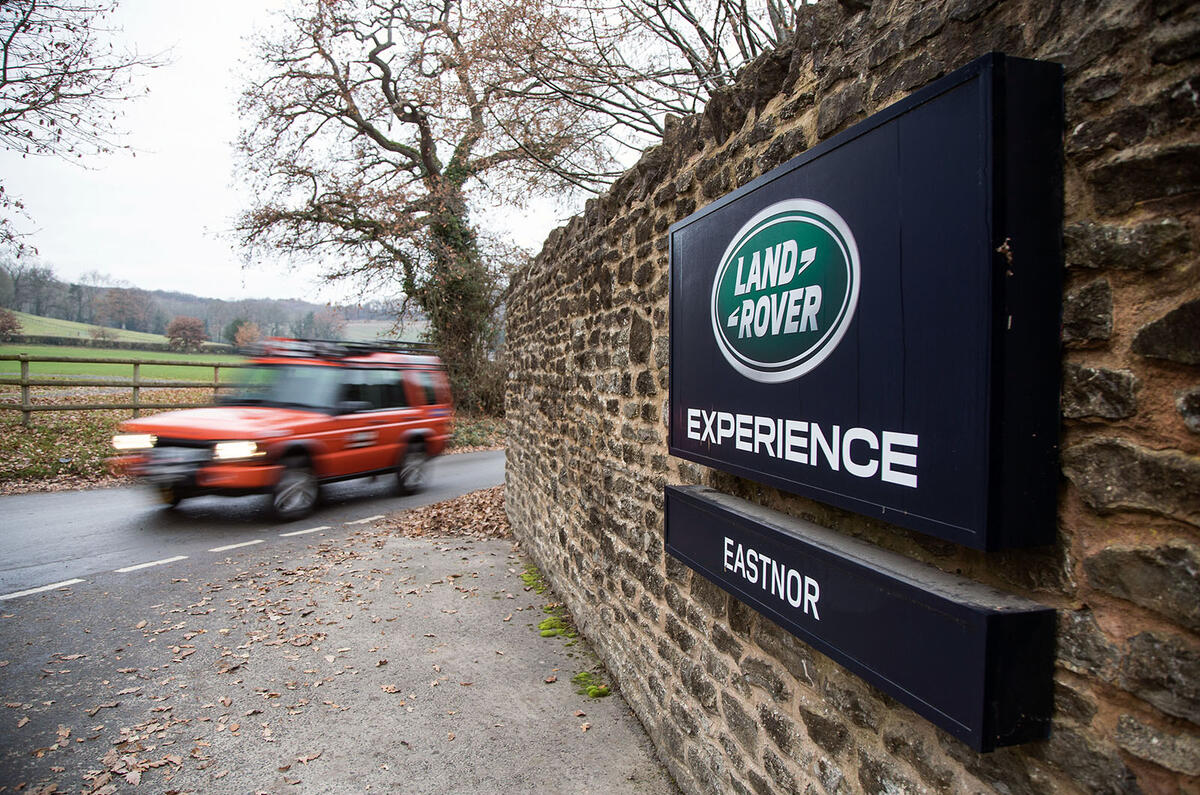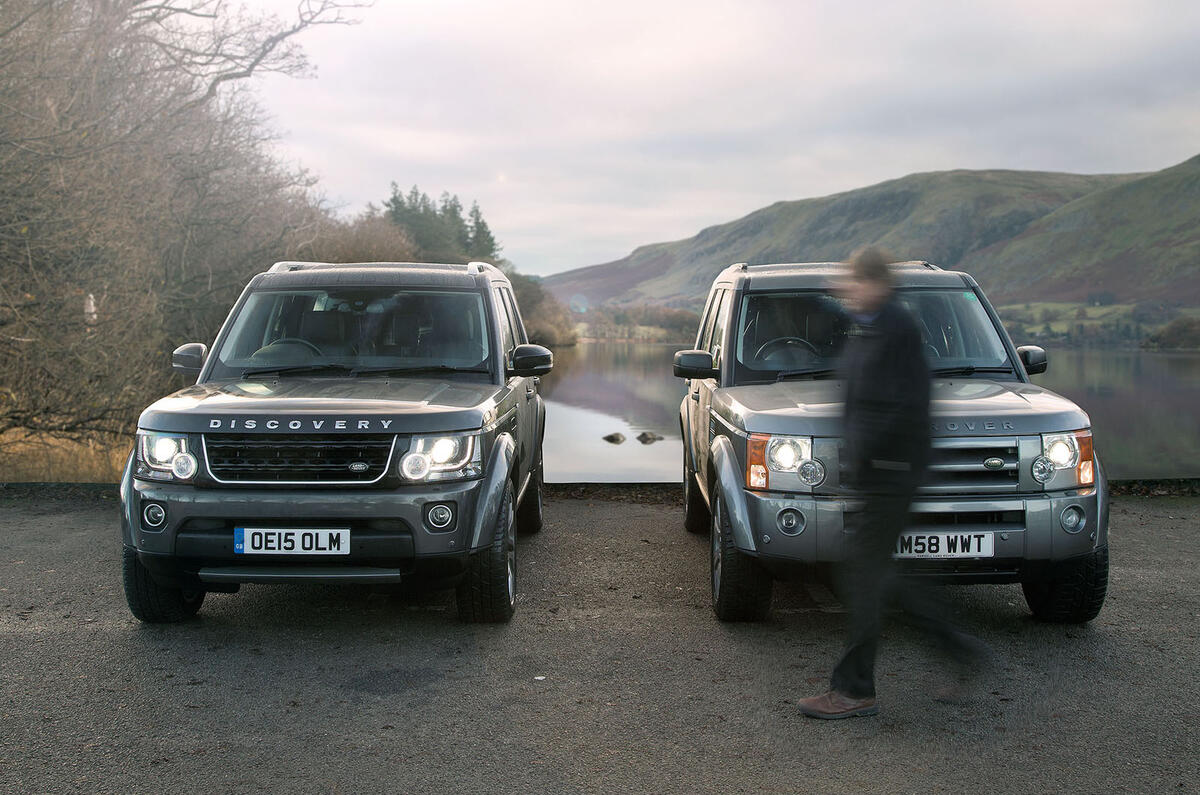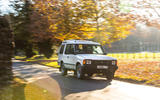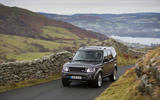The Land Rover Discovery has been the making of the Solihull company.
Before it arrived, the firm was best known for two oddly disparate models that just sort of happened. The first was a Midlands-made Jeep substitute that turned out better than its creators could ever have imagined. The second, more luxurious and refined, was hastily styled by its engineers and powered by a stray American V8 – and proceeded to amaze the world by creating a class that is still potent 40 years on.
Not that things started well. The Discovery's launch at the Frankfurt show in September 1989 was an apologetic affair. The Germans showed what they thought of the 1980s British motor industry by hiding Land Rover’s stand away in Hall 9, with other also-rans from Japan and eastern Europe. Luckily, Britain’s loyal motoring press showed its mettle by drawing plenty of attention to Land Rover’s new ‘leisure vehicle’ and crowds flocked to its next public outing: the British motor show at Birmingham’s NEC.

What made the Discovery different? Mostly that it was conceived for a market where buyer preferences had been researched and were well known. The Discovery was needed to keep the company healthy. The working 4x4 market was in decline, mainly because Toyota was taking over the export world Land Rover had been taking for granted since the 1950s.
Meanwhile, more generalist models such as the Mitsubishi Shogun and Isuzu Trooper were having their day in the sun, which even shone on them in Britain. Land Rover had a bit of money to invest and a target to aim at. Under MD Tony Gilroy, it took the 100in Range Rover chassis, complete with its allcoil, non-independent suspension, plus a load of body components, and launched the lighter, cheaper and entirely different-looking Discovery to immediate customer acclaim.
Which is where, you could argue, the modern history of Land Rover began. The Range Rover/Discovery/Defender line-up of the early 1990s suddenly looked like a proper model range, and that is how it has stayed. Even the subsequent launch of the Freelander (which again pioneered a road-car class) ultimately didn’t disturb the core line-up, having lately been revised and renamed Discovery Sport to conform.

Now it’s time for the fifth iteration of the Discovery to take the baton, but before it reaches its first customers, we thought it right to venerate the previous models, every one of which has helped to build the hill of Land Rover’s success higher. This is why, one evening recently, we found ourselves at Plymouth Hoe on the south coast in pitch darkness, looking for a place to park.
The plan was simple. Let’s drive up the spine of the country, starting where the first Discovery was launched, moving through the three subsequent iterations in a kind of relay while connecting as many Discovery heritage sites as possible (Eastnor Castle, the Solihull factory, well-known launch roads of the Lake District) to remember these fine models and their achievements, finishing in Scotland, where the Mk5 Discovery launch was taking place.
In late 1989, Land Rover bosses had decided Plymouth was right for the press launch of Discovery 1, because from here, British explorers had traditionally set out to discover new worlds, just as Land Rover was setting out with the Discovery to conquer the world market. So hacks collected cars one rainy morning, drove local roads, did some damp off-roading at Mount Edgcumbe just across the water from the Drake monument (where Sir Francis completed the legendary bowls game before sailing out to defeat the Spanish) and went contentedly home. That, at least, is the way their stories put it.

This time around, our packed three-day schedule had us arriving at Plymouth Hoe in darkness on a Wednesday, knocking off this story’s lead picture (of Land Rover’s pristine white three-door Discovery S1, just bought for its collection), then rising early to be at Eastnor Castle, buried in the Malvern Hills 180 miles to the north, in good time.
What charms you instantly about the Discovery 1 is its simplicity: the very elevated driving position with the glass seeming to reach from thigh height to way above your head, the ultra-thin screen pillars, the soft but supportive seats, the dependable, tractor-like idle of the 2.5-litre TDi engine, the short but slightly imprecise throw of the gearbox, the amusing nosedive under brakes (given that the initial bite is strong) and the pleasant, floaty ride that took me straight back to the earliest Range Rover.
It’s no wonder people stick with these old Discoverys. Despite their tendency to rust, you still see them all over the place. The soft ride, the ‘command’ driving position, the arena seating for kids and the easy luggage access through a side-opening rear door are all beguiling, especially as the car isn’t that big on the road and you can own one like this for a price well south of £4000. I really don’t think they’re going lower.

Part of the appeal is that no one would build a car like this these days. Non-independent suspension would look too crude on the spec sheet. The ride would be deemed too floaty. What we sometimes call The Curse of the Nürburgring has changed cars, even SUVs, so that they have huge reserves of swervability, courtesy of rigid anti-roll bars and diamond-hard suspension bushes. That’s great if you encounter an unexpected elk in northern Sweden but useless and positively intrusive (via road noise) on your drive to the shops.
Faults? The idle of the TDi 200 engine you find in nearly every Disco S1 is pretty OTT. The gearchange isn’t great. And when it comes to easing past someone at 70-75mph on the motorway (the relaxed cruising limit unless you’re aided by gradients), you plainly need more torque. True, there’s a quieter V8 version, but that packs no more torque than the diesel and consumes fuel at double the rate.
It can’t have taken Land Rover long to realise that they needed extra urge than the 111bhp TDi 200 could produce, but while the improved TDi 300 that came in 1994 was cleaner and more refined and had a better gearbox (we used to refer to its ‘riflebolt’ action), it had only 2bhp more, so the car was no quicker. Better performance had to await the five-pot TD5, launched with the Discovery S2 in 1998, whereupon it became fashionable among some buyers to complain about the smooth new engine’s dependence on electronics. Although Discoverys filled Tesco car parks, owners saw themselves halfway across the Sahara, unable to mend the engine management module with a handful of spanners.

Land Rover legend Roger Crathorne was waiting for us at Eastnor when we pitched up at lunchtime. So was a Discovery S2 V8, a 2002 facelift model that was a fully liveried veteran of Land Rover’s G4 Challenge, the international competition that replaced the Camel Trophy when tobacco sponsorship moved beyond the pale. Our plan was to step into the G4 for a lap of Eastnor’s tracks with Crathorne, before an overnight stay in nearby Ledbury and an early departure for the Solihull plant the next morning.
Opinions vary about this vehicle, launched in 1998. It was an early product of BMW’s acquisition of the Rover Group in 1994, only made as a five-door, much better built and considerably more rigid in the structure. Although 6in longer, it was still based on the old 100in wheelbase chassis, which meant it had a long rear overhang. That was good for luggage space and for accommodating the two forward-facing third-row bucket seats of the seven-seater, but didn’t do much for its departure angle off road, or its towing stability – which is why to this day hard-nut 4x4 types really don’t approve. It was also 60mm taller, which made it marginal in some multi-storey car parks.
The high seating was still there and so was the relaxed ride, mainly because body roll in higher-speed corners (anathema to anyone of a BMW persuasion) had been tamed by an innovative but sometimes troublesome gizmo called Active Roll Control, a kind of hydraulic jack at the end of the anti-roll bars that allowed lots of wheel articulation at low speeds but kept the body flat in hard-charged corners.
The ‘product design’ dash of the S1 had been toned down, but the much more house-trained five-cylinder TD5 diesel pumped power up to a useful 136bhp, while the V8 had a mighty 182bhp, which meant it worked well with the four-speed ZF automatic, the version we tried.
Despite caveats, I thought the G4 V8 was great, mainly for the unchanged driving position, the ultra-smooth, woofly V8 and the seamless, old-style ZF ‘slushmatic’. The fuel consumption must have been fearsome while we four-by-foured around Eastnor and then set off on the 60-mile trip to Solihull, but you rarely think about economy in one of these, given its 95-litre (that’s 21 gallons) fuel tank.

The Discovery 3 awaiting us at Solihull was a late, 58-plate, 80,000-miler owned by a real, live JLR engineer, Lucy Nicholls, whose job is to predict (with the help of clever software) the flow of a car production process and find ways of making it run better. She and her husband generously lent us the car to drive 200 miles from Solihull to Penrith, having bought it last March to replace an older Range Rover. They spent a long time looking for the right car, and this one’s near-showroom condition showed both the rewards of a careful search and the model’s ability to absorb miles.
When it was new, the Discovery 3 really stopped traffic. While remaining true to the five or seven-seat ‘household’ 4x4 idea, it cut all connections with the models of the past. It was bigger and far more imposing, with four-wheel independent air suspension, a 2.7-litre diesel V6 (other little-bought petrol engines were available), a six-speed automatic transmission and a much more sophisticated full-time four-wheel drive system bristling with electronics that could individually control every wheel uphill and down-dale.
The ‘product design’ styling was controversial from day one, although never to me. I always reckoned it a great piece of car design, and still do now. But the story goes that people both inside and outside the company quibbled about the way the mid-level swage lines front and rear didn’t carry on through the doors, and some also disliked the (ingenious) asymmetrically split tailgate.
Such comments, especially from the US, led Land Rover’s marketeers to persuade design director Gerry McGovern to refresh the styling in the ways that produced the more emollient Discovery 4, our transport for the final 140 miles to Edinburgh. Legend has it that McGovern didn’t need much persuading to inject extra luxury into the interior and ditch the simple three-bar grille in favour of more modern mesh.

The change from Discovery 3 to 4 allegedly boosted sales in the US, but when you drive the pair now, you’re struck by the size of the step from Discovery 2 to 3 and the modesty of the progression from 3 to 4. Like the Range Rover, the Discovery 3 overnight became one of those 4x4s whose ordinary demands of its driver are quite at odds with the enormity of what it can achieve off-road. It’s a smooth cruiser with a sophisticated motorway ride, but on tough terrain it’ll scare the driver long before it runs out of capability.
The Discovery 4, its diesel V6 expanded from 2.7 to 3.0-litres, adds polish and cuts road noise almost to zero, but essentially it’s the same fine vehicle. Indeed, it’s so good that replacing the benign but tough-looking demeanour of the first four Discovery models with a fifth iteration that’s more sleekly Range Rover-like has caused a bit of controversy. I get the feeling there are enthusiasts of the first four that will need to be persuaded.
What a hack scribbles hastily in a notebook can summarise things better than subsequent days of careful thought. At Eastnor, after a few miles in the Discovery 1, I wrote: “You desire this car when you get in, and you’re still desiring it when you get out.” I’ve since been reminded that this goes for them all.























































Join the debate
Add your comment
How the years have improved it
Disco 1/2
Proper motoring jounalism...
Proper motoring jounalism...